Yates Account
Join now
Create a Yates account today!
Sign up to join the Yates Garden Club for monthly e-mails packed with seasonal inspiration, tips for success & exclusive promotions.
Plus if you’re a Garden Club member you can take part in the Yates Growing Community - a blog to share successes, get advice & win prizes in fun challenges along the way!

Forgot password
Enter the email address associated with your account, and we'll email you a new password.
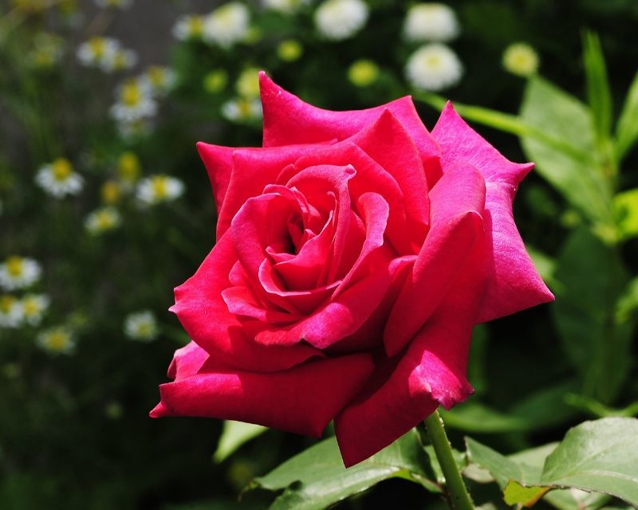
There are so many different types of roses, all of them a delight. If you're thinking about growing them, it's worth visiting your local public rose gardens in spring. It's the perfect place to discover both heritage and cutting edge varieties, plus you can smell and touch rare and unusual blooms.
Get some fragrant inspiration, decide on the roses you like best, then search them out from a grower or garden centre.
Here's our roundup of the different types of roses commonly grown in New Zealand.
Hybrid Tea Roses
The most widely grown form of rose, modern hybrid teas are the results of more than a century of breeding for delicate colour and fragrance. They produce large, well formed solo flowers in a wide range of colours on long, upright stems. They make a good garden display, but this type is all about admiring the perfect individual blooms. These are the best roses for cutting, they are absolutely beautiful showcased in a vase. Scent is variable; a lot of hybrid teas have no fragrance but there are plenty of scented varieties available.
Hybrid Teas are always grafted onto strong rootstock and grow to about 1.5m in height.
Newly-planted Hybrid Teas are pruned to train them into an open 'cup' shape of woody stems. Each year during winter dormancy, bushes are pruned to remove dead wood. The live stems that are left will be 1-3 years old. Then, these live stems are shortened back to a strong bud - these buds will sprout new lateral stems, that deliver the spring blooms. Pro Tip: Make sure you never shorten stems by more than 1/3.
After you've cut the spring blooms to enjoy in a vase, new sub-lateral stems will develop below the cut, to produce a second flush of flowers. Repeat blooming roses like these are known as 'remontant' roses.
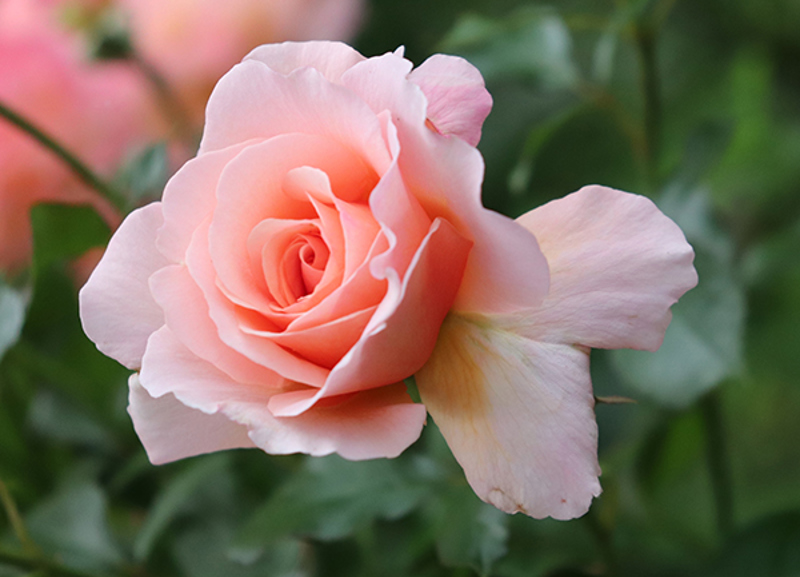
An 'Augusta Luise' hybrid tea rose.
Floribunda Roses
Floribunda roses produce an abundance of small blooms in a wide variety of colours. Borne in clusters or trusses, the flowers are less suitable for picking than those of the hybrid teas, but they provide a more lavish display in the garden, over a longer period. A lot of floribundas have no scent, but highly fragrant varieties are available.
Usually grafted onto rootstock, they are generally hardier than hybrid teas and only reach about 90cm in height.
Like Hybrid Tea roses, Floribundas bear flowers on one-year-old stems, so new growth is best pruned lightly. Don't be shy with the old woody growth though, prune it hard during winter. The remaining live stems are pruned back to a strong bud - these buds will sprout new lateral stems, that deliver the spring blooms. Pro Tip: Make sure you never shorten stems by more than 1/3.
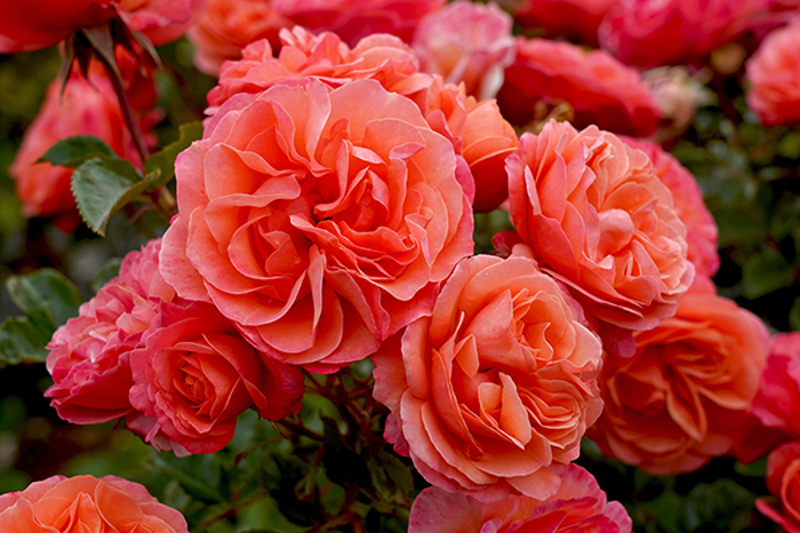
Floribunda 'Coral Lions-Rose®'
Grandiflora Roses
A cross between hybrid tea roses and floribundas that combines the most attractive qualities of both. The flowers look like slightly smaller hybrid tea blooms on tall stems, but the abundant clusters of flowers and continuous blooming are just like a floribunda. They grow quite tall (up to 1.8m) so they make a striking backdrop. Usually not very fragrant, but the gorgeous floral display more than makes up for it. You'll mostly see this type mentioned in websites or books from the USA, as European growers traditionally consider these intermediate roses to be either hybrid teas or floribundas.
For pruning, treat grandiflora roses just like hybrid tea varieties.
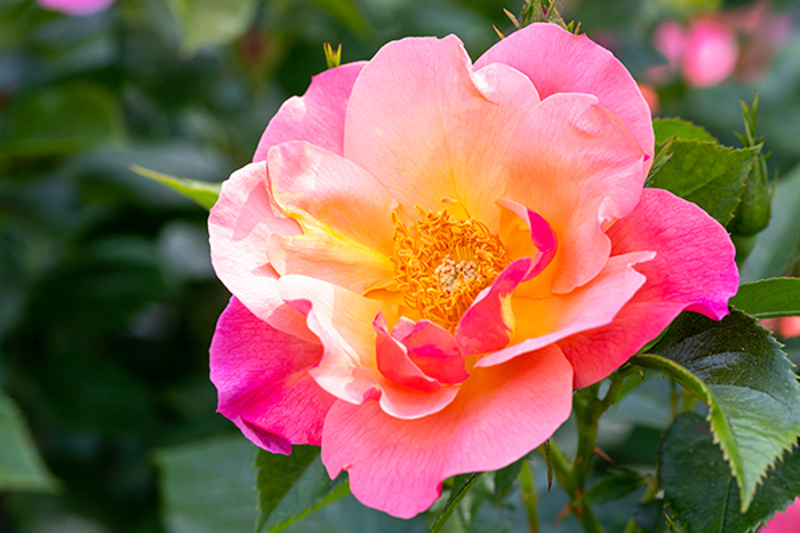
Polyantha Roses
An old-fashioned hybrid tea cross, polyanthas aren't widely grown but deserve to be because of their hardiness. Their abundant small blooms can be single, semidouble or double in form and generally produce a more subtle display than floribunda types. A relatively low height makes them an excellent choice for mass planting.
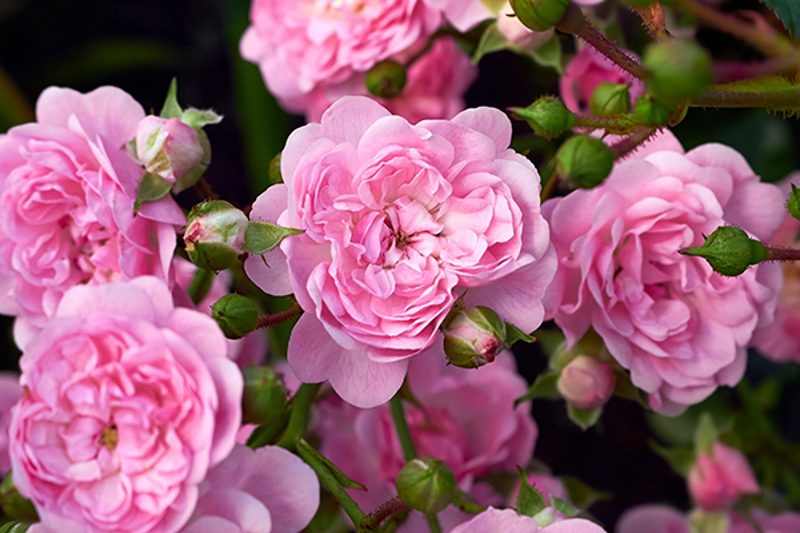
Polyantha 'The Fairy' rose
Old Garden Roses
'Old' roses encompass a broad group including Species, Old European, Tea and China roses. Strictly speaking, to qualify as old roses varieties need to date from before 1867, but there are now lots of modern variants of the old cultivars. In recent years there has been a great upsurge in interest in them, due to their good garden qualities. They are particularly fragrant and hardy, and have a delightful, informal character. Also known as heritage roses, old roses are making a comeback with discerning gardeners.
It's best to prune Old Garden roses very lightly. Remove dead wood each year in winter, but when you shorten the stems back to a strong bud, make certain you don't cut them back by more than 1/4 at a time. When in doubt, you can get away with skipping the winter prune for a year and simply deadheading the spent flowers.
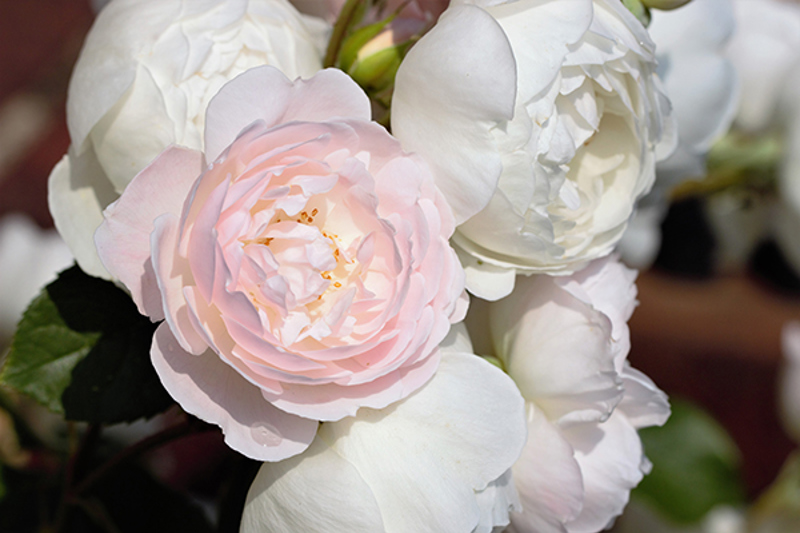
Shrub Roses
Shrub rose is a general term used to describe hybrids between wild species, hybrid tea roses and floribundas. They are extremely varied in habit, leaf shape and flower form.
They don't need much pruning, other than getting rid of spindly or weak growth.
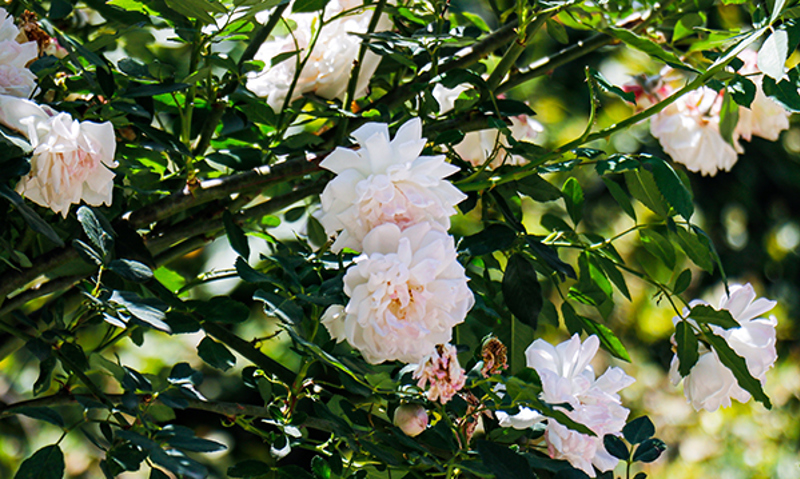
Species Roses
Species roses are those which are grown in their original wild form. They produce single, fine-petalled flowers, mainly in spring, followed by a display of decorative berry-like hips in autumn. They are particularly resistant to pests and diseases and require little pruning apart from the removal of soft tips and straggly growth.
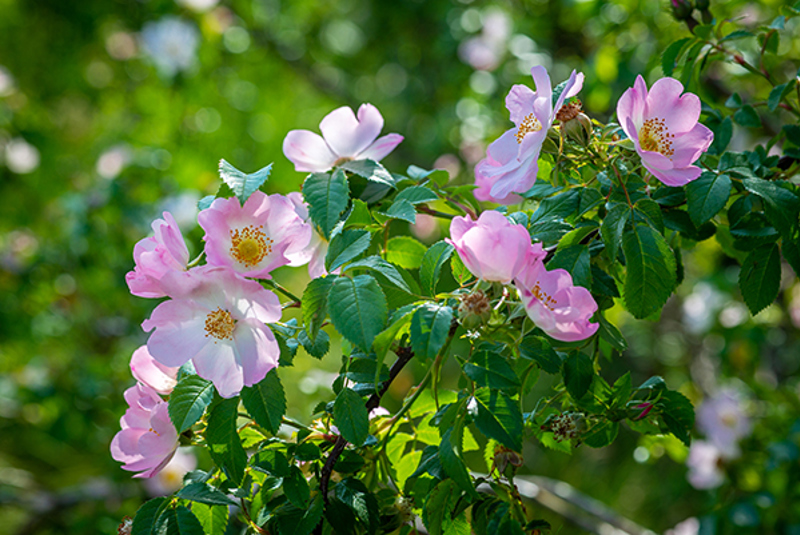
Miniature Roses
Miniature roses are tiny floribundas or hybrid teas, with little leaves and wee flowers in perfect proportion. They normally grow between 20–50 cm high and are almost thornless. They can be used for edging, growing in containers, rockeries, window boxes or indoors as temporary houseplants. These little beauties aren't grafted.
They only need minimal pruning, to maintain a nice shape. Cut out deadwood, then shorten live stems back to a strong bud - these buds will sprout new lateral stems, that deliver the spring blooms. Pro Tip: Make sure you never shorten stems by more than 1/3. Remove spent flowers as needed.
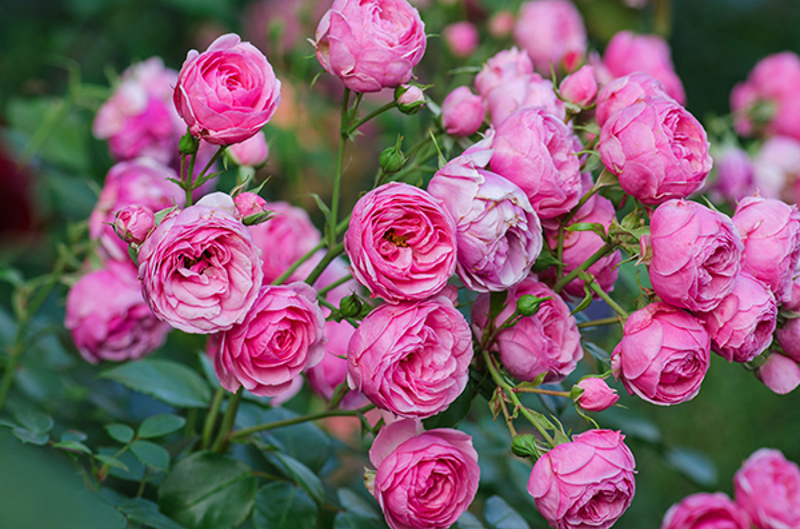
A miniature 'Pomponella' floribunda rose.
Climbers and Ramblers
There are a vast range of beautiful climbing and rambling roses to choose from.
Ramblers have long, pliable canes and bear large trusses of small flowers. They produce several of these strong and flexible stems from their base each year, which you can tie into place scramble up a trellis, pergola or wall. They're covered with a stunning display of petite flowers when they bloom in spring.
The canes of ramblers only flower once. Each year, they need to be pruned right back to the ground straight after flowering, so new flowering stems can grow up again next season. Because ramblers need to be re-trained every year, if you prefer the formal look they demand a bit more work than most rose types. Pro Tip: You don't need to train them if you plant them informally amongst shrubs, that can help to hold them up in a big flowery mass.
Climbers grow stout and rigid stems and their height potential is far greater than that of ramblers - as much as 6m high! They generally need to be secured to the support structure they're leaning on. In addition to the fragrance, they're quite hardy. Flowers range from gorgeous massed clusters to single, large flowers. It's best to plan ahead and check the full-grown height of a variety, to make certain it's not too big for your space (otherwise you'll need to constantly prune to keep it under control). Once established, climbers don't shoot many new canes from the base, so be cautious about cutting them right back to the ground.
A big attraction of climbers is that most varieties will bloom twice a year. These 'remontant' climbers are pruned during winter dormancy, a little harder than most rose types. Thin out dead wood, then shorten the live lateral stems, only retaining 3 buds on each.
Once-flowering climbers don't respond well to severe pruning, so for those just take out the dead canes, no stem shortening is needed.
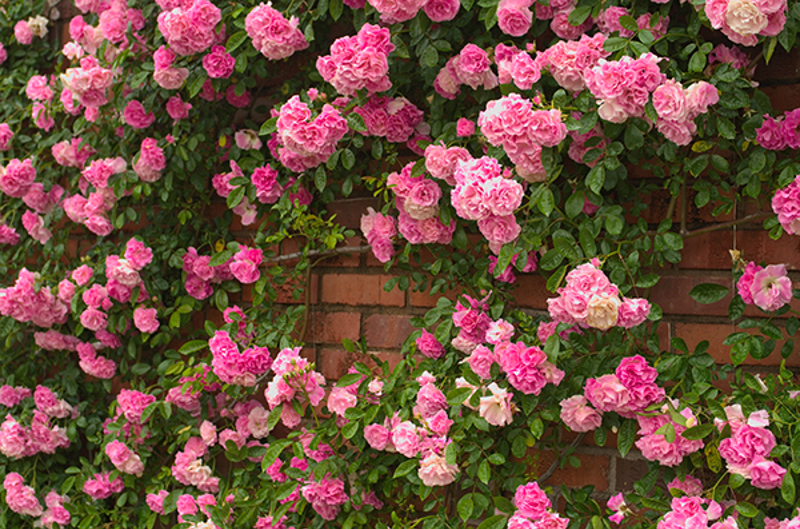
A rambling rose.
Did You Know?
The 'Winter Rose' or Hellebore isn't related to the rose family at all. In fact, they're members of Ranunculaceae, the buttercup family. Find out more about Hellebores here.














Share
Share this article on social media